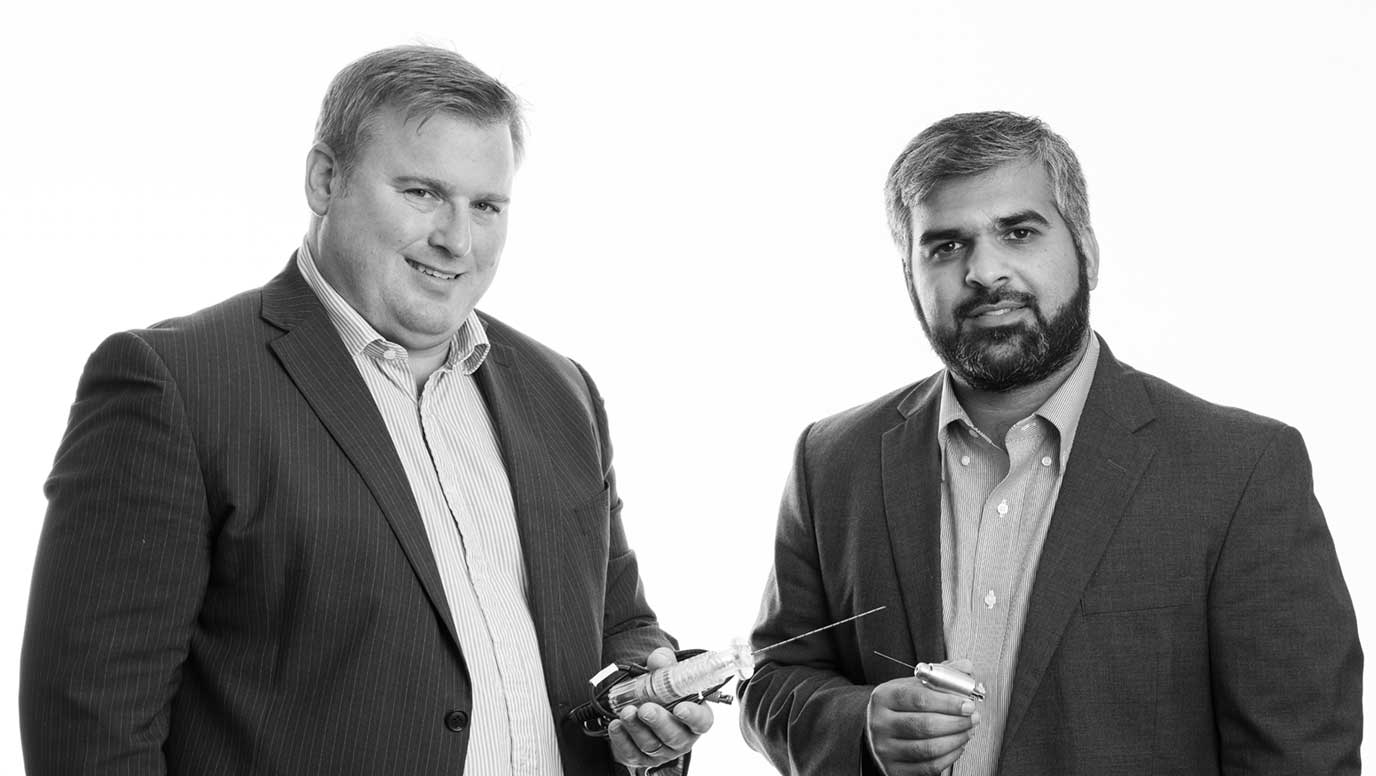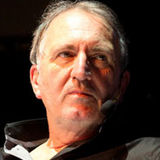From trout to tattoos as Active Needle makes good vibrations a big hit

As co-founder Ian Quirk explains, Active Needle – based in the Culham Innovation Centre – is exploiting the effects one gets when you add ultrasonic waves to a needle to make it vibrate.
While its core market is medical technology, the company is demonstrating its potential across multiple industries. Quirk says: “The truly extraordinary properties of an ultrasonic needle are applicable across a wide range of areas.
“We’re working with the aquaculture industry and have signed a commercial deal with a prominent tattoo manufacturer, which for us is completely left-field. Basically we are looking for those opportunities where, potentially, there's a very large impact for our technology, virtually no competition and a genuinely unsolved clinical or other need – all opportunities around the ultrasonic needle.”
The core technology was developed at Dundee University as a joint project between ultrasound engineers and medics. Quirk says: “It was pretty much a case of a problem and a solution coming together at the same time, rather than a technology searching for some kind of application. The initial question was how to use an ultrasonically active needle - to improve the reliability of placing needles under ultrasound guidance.
“Ultrasonic frequencies are anything above 22,000 cycles per second and we typically work at more than twice that. What we do is vibrate a needle very, very rapidly, but only over about a thousandth of a millimetre. So it's very tiny, low energy motion. And it turns out that Doppler ultrasound medical scans can pick up that motion.
“You can see the result as a sort of bright line or discrete regions, depending on how you want the fiducial markers on whatever needle you've got.”
Quirk and co-founder Dr Muhammad Sadiq, who is the ultrasound guru, formed the business in 2016 initially exploring the medical aspects using that single Dundee University patent and has successfully expanded its patent portfolio from there.
The technology has been around in its current form since around 2011-2012 so the proposition has taken a while to get to maturity, which Quirk believes is “not unusual in the case when you're in a university setting. There is a lot of background research and not much that's commercially viable until you move away from academia and into a commercial environment.”
The measure of progress in recent times is that most of Active Needle's customers are B2B collaborative projects and about 80 per cent of these are outside the UK – principally in Germany, Norway and the US.
Having spoon-fed the business on angel financing for the large part, including some help from Oxford Innovation Finance in the formative years which Quirk explains was extremely helpful at the time, Active Needle has responded to a changing financial climate by pivoting to collaborative projects with companies – either where there is a good overlap or where Active Needle has a technology which meets another company's major need.
With 30 years of experience in medical devices, Quirk is comfortable with all aspects of building the business – spanning designing, launching, marketing, securing approvals for medical products and selling.
And the non-core element of tattooing? How did that emerge?
Quirk explains: “Where there's a completely non core element such as tattooing, we typically license that out. I know nothing about the market, I've got no tattoos; neither has Muhammad.
“We knew of a thought leader in that area so we signed a commercial deal with that company to effectively be our sales and marketing force in the segment. We still do core R & D but we're committed to a lot of collaborative projects.”
Numbers of bodies in the company are not as important as the expertise of those who are employed so Active Needle has deliberately kept the business 'capitally efficient.'
Quirk says: “I've got a team of people that are either ultrasound experts or who have launched medical devices before, either in marketing or regulatory affairs. That's quite deliberate. Our intention was never to manufacture anything – we typically intend to outsource that kind of function – at least until we are generating large revenues.”
It would appear that Active Needle has ample headroom to expand its proposition. Quirk concedes: “It's an extraordinary platform; at first it was just a question of us looking at the visibility of a needle in a human using an ultrasound scanner. But it has kept giving us additional features that we can turn into products so we are always looking to innovate the use of the technology.
“It does a number of things: There's ultrasound visibility, there’s an increased perfusion into tissue which we're looking at delivering into cancers – and there's also a greatly reduced pain as well through skin penetration, hence the tattooing; it's a very low pain offering that we have.
“So wherever we see an effect, we will look for the best area in which to deploy that effect. Hence tattooing: it's a really good embodiment of what the technology can do. That market has led to our first commercial deal and it's going well. We're looking to fully launch that aspect of the business worldwide next year.”
Active Needle's current based is managed by Oxford Innovation which also has responsibility for The EpiCentre in Haverhill and provides a terrific launchpad for Active Needle's continuing growth.
Quirk says the location is also convenient for the co-founders - midway between their homes. “We've been at Culham Innovation Centre since 2016. It allows you to expand and contract as necessary. Since covid we've downsized our office but increased our lab space, reflecting the increased number of project extant, so the venue provides the flexibility to do that. Internal networking programmes have also been of use in the past.”
Quirk is careful not to give too much information away when discussing future ventures but conceded that the company is working in areas of vaccine and also cancer drug delivery, which he describes as very exciting.
He relishes working in the drug discovery sector, not least because there has been cancer in the wider family and he is in that marketplace to make a difference if he can – “to do something to improve the quality of life. That's really what I'm what I'm doing this for.
“And there's other areas that are fascinating – areas we never thought we'd be working in. Innoculations of farmed fish is one, and there's some others as well that are just outside the norm – all substantial areas of need that can't be addressed conventionally.”
Tech Spec – What the technology does
• The motion of the needle reduces the penetration force into the skin and therefore lowers the amount of nerve endings that are triggered when the needle punctures. Quirk says this was completely unexpected as an effect or phenomenon when the company was looking at this in the beginning.
• The motion of the needle is picked up on Doppler ultrasound, which is designed to pick up motion on ultrasound scans. That's very widely used.
• The motion of the needle also increases profusion rates into tissue. That applies equally to what is being treated - whether that be tumours or fish. So the company is oscillating the needle at several 10s of thousands of cycles per second, only over thousandths of a millimetre and it brings what Quirk describes as “all these extraordinary benefits.”
You can get in touch with Ian and the Active Needle team online via activeneedle.com and with The EpiCentre at www.epicentrehaverhill.co.uk


